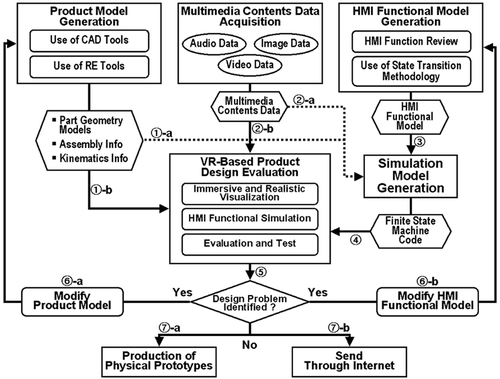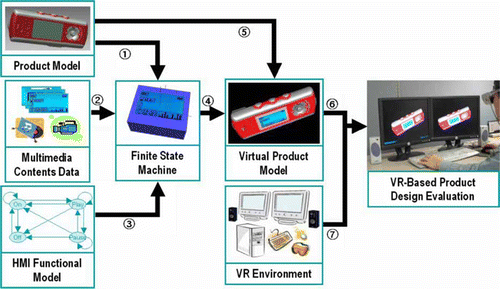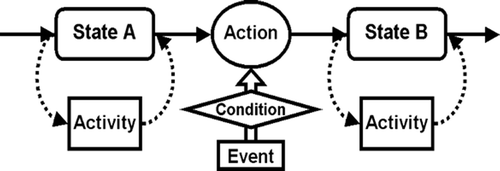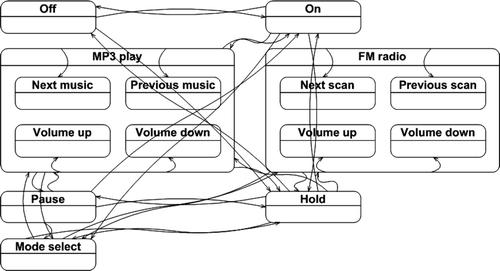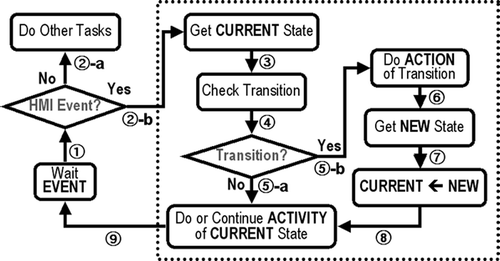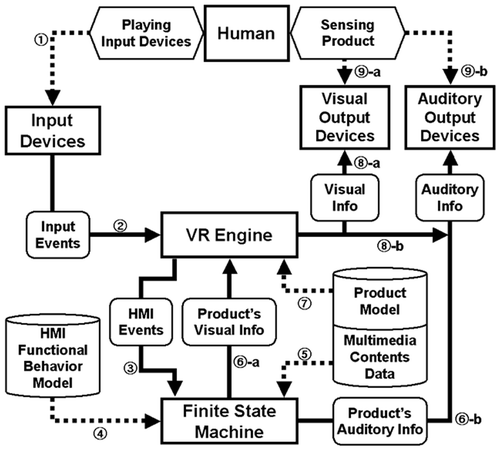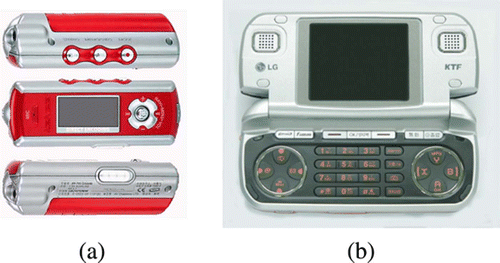Figures & data
Figure 3. RE-based geometric model creation: (a) scanned data at multiple views; (b) single triangular mesh; (c) final geometric model.

Figure 9. VP model for the MP3 player at four different states: (a) MP3 play; (b) mode select; (c) FM radio; (d) hold; and (e) VR-based product design evaluation.
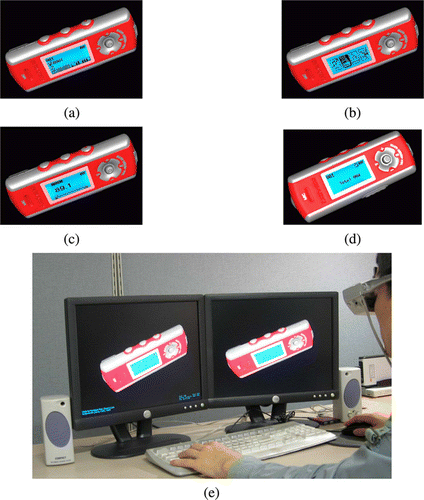
Figure 10. VP model for the game phone at four different states: (a) on; (b) calling; (c) multimedia menu; (d) movie; and (e) VR-based product design evaluation.

Figure 12. Graphical plots of task performance measures for (a) the MP3 player and (b) the game phone.
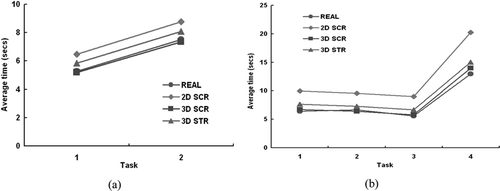
Table 1. Task descriptions and performance measures.
Figure 13. Graphical plots of questionnaire results for (a) all subjects and (b) five subjects with experiences of using HMD.

